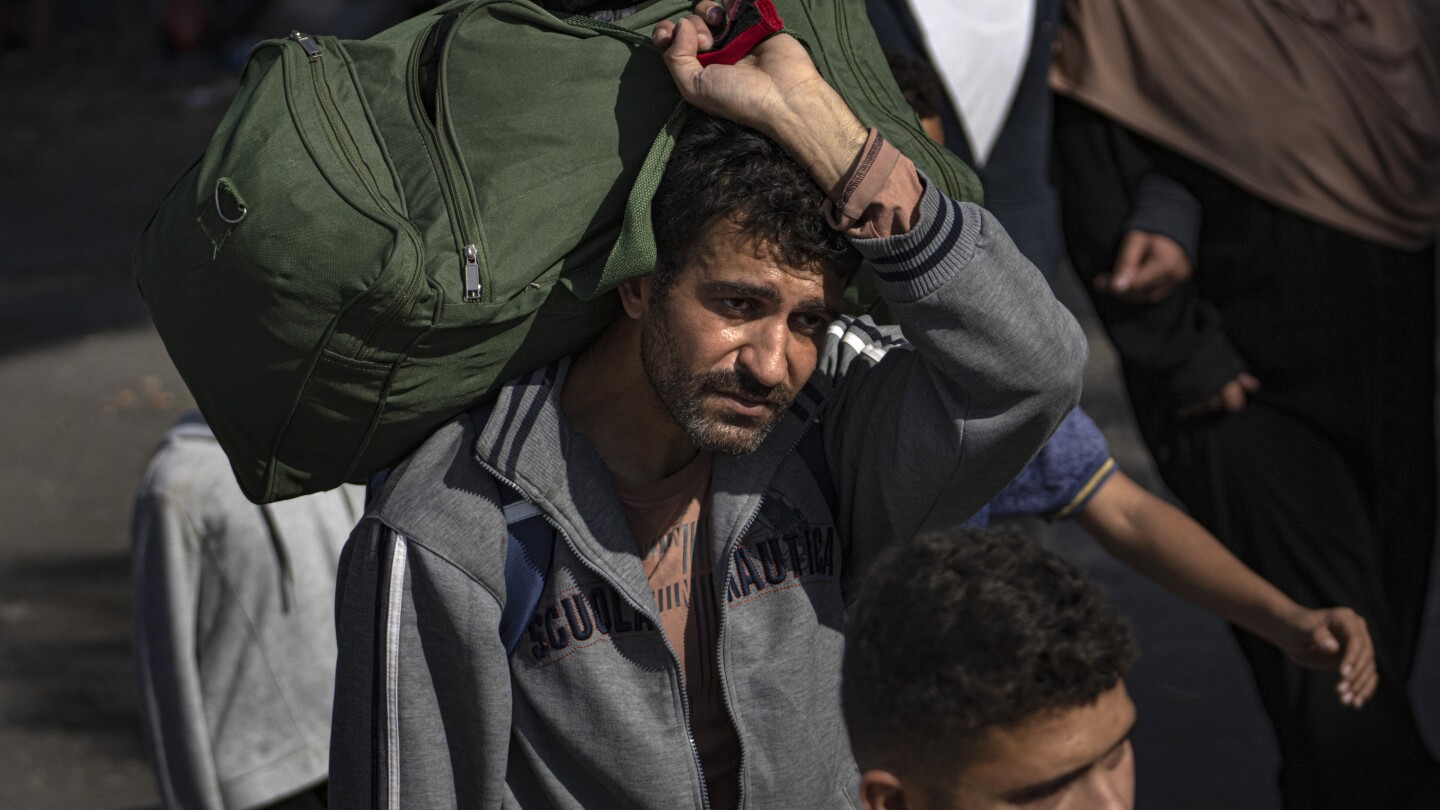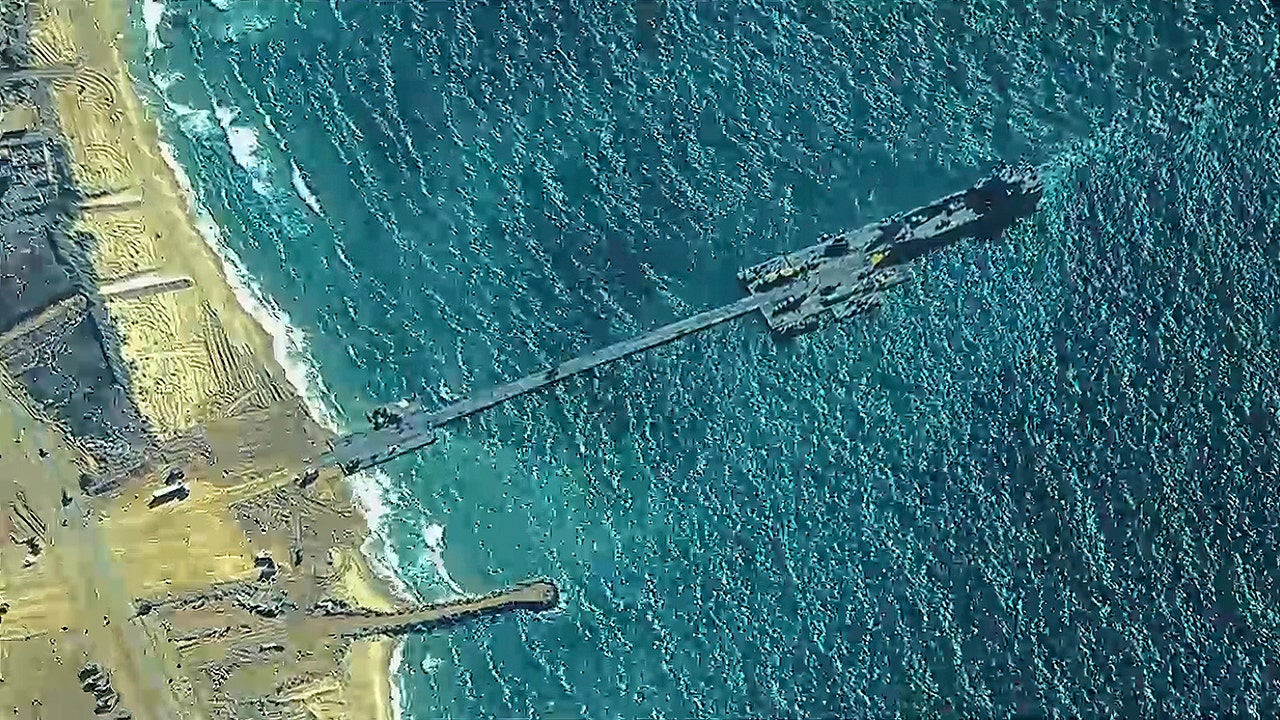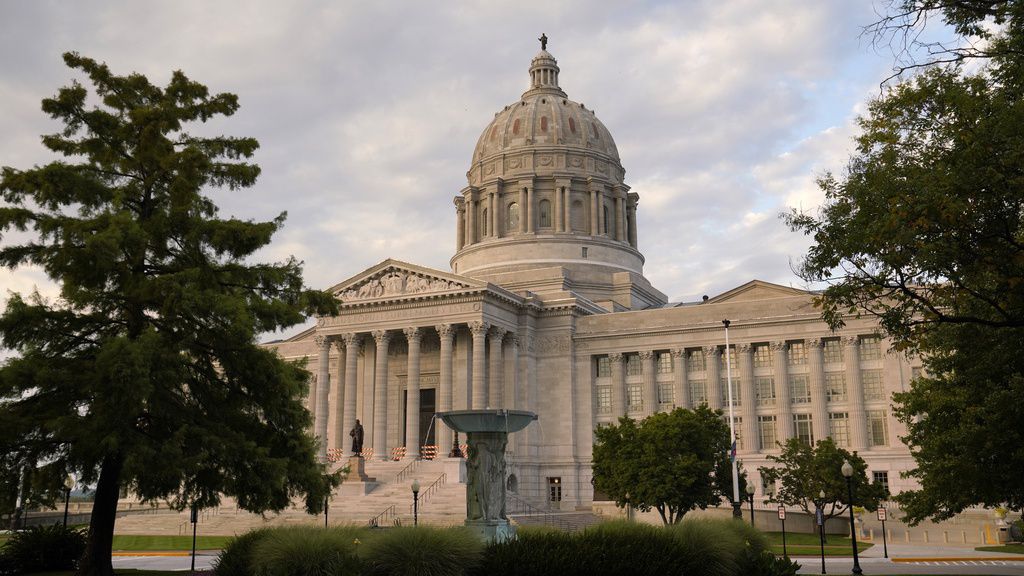World
Growing concerns from allies over Israel’s approach to fighting Hamas as civilian casualties mount

DEIR AL-BALAH, Gaza Strip (AP) — Israel’s prime minister pushed back Saturday against growing calls from Western allies to do more to protect Palestinian civilians, as troops closed in on Gaza’s largest hospital that Israel claims is Hamas’ main command post but still hosts thousands of patients and people seeking shelter.
Benjamin Netanyahu said the responsibility for any harm to civilians lies with Hamas, repeating long-standing allegations that the militant group uses civilians in Gaza as human shields. He said that while Israel has urged civilians to leave combat zones, “Hamas is doing everything it can to prevent them from leaving.”
His statement came after French President Emmanuel Macron pushed for a cease-fire and urged other leaders to join his call, telling the BBC there was “no justification” for Israel’s ongoing bombing.
Following Hamas’ deadly Oct. 7 attack on Israel, in which at least 1,200 people were killed, Israel’s allies have defended the country’s right to protect itself. But now into the second month of war, there are growing differences in how many feel Israel should conduct its fight.
The U.S. has been pushing for temporary pauses that would allow for wider distribution of badly needed aid to civilians in the besieged territory where conditions are increasingly dire. However, Israel has so far only agreed to brief daily periods during which civilians are able to flee the area of ground combat in northern Gaza and head south on foot along the territory’s main north-south artery.
Since these evacuation windows were first announced a week ago, more than 150,000 civilians have fled the north, according to U.N. monitors. Tens of thousands more remain in northern Gaza, many sheltering at hospitals and overcrowded U.N. facilities.
Palestinian civilians and rights advocates have pushed back against Israel’s portrayal of the southern evacuation zones as “relatively safe,” noting that Israeli bombardment has continued across Gaza, including airstrikes in the south that Israel says target Hamas leaders, but that have also killed women and children.
The U.S. and Israel also have diverging views on what a post-war Gaza should look like. Netanyahu and military leaders have said this needs to be dictated solely by Israel’s security needs, such as ensuring no threats emerge from the territory. Israel has said a key goal of the war is to crush Hamas, a militant group that has ruled Gaza for 16 years.
Secretary of State Antony Blinken, speaking to reporters Friday during a tour of Asia, laid out what he said were fundamental principles for a post-war Gaza, some of which seemed to run counter to Israel’s narrow approach.
Blinken said these principles include “no forcible displacement of Palestinians from Gaza, no use of Gaza as a platform for launching terrorism or other attacks against Israel, no diminution in the territory of Gaza, and a commitment to Palestinian-led governance for Gaza and for the West Bank, and in a unified way.”
FIGHTING AROUND HOSPITALS
Concern has grown in recent days as fighting through the dense neighborhoods of Gaza City has come closer to hospitals, which Israel claims are being used by Hamas fighters.
On Saturday, Palestinians said Israeli troops were within view of Shifa Hospital, Gaza’s largest. Israel has said Hamas’ main command center is located underneath the hospital, claims Hamas and Shifa staff deny.
Thousands of civilians had been sheltering in the Shifa compound in recent weeks, but many fled Friday after several nearby strikes in which one person was killed and several were wounded.
Abdallah Nasser, who lives near Shifa, said by phone that the Israeli military was advancing deep into the city from its southern and northern flanks.
“They are facing stiff resistance, but they are advancing,” he said.
Mohammed al-Masri, one of thousands still sheltering at the hospital, said that from a higher floor he could see Israeli troops approaching from the west. “They are here,” he said. “They are visible.”
Thousands have fled Shifa and other hospitals that have come under attack, but physicians said it’s impossible for everyone to get out.
“We cannot evacuate ourselves and (leave) these people inside,” a Doctors Without Borders surgeon at Shifa, Mohammed Obeid, was quoted as saying by the organization.
“As a doctor, I swear to help the people who need help.”
The organization said other doctors reported that some staff had fled to to save themselves and their families, and urged all hospitals be protected.
CASUALTIES RISE
More than 11,070 Palestinians, two-thirds of them women and minors, have been killed since the war began, according to the Health Ministry in Hamas-controlled Gaza, which does not differentiate between civilian and militant deaths. About 2,700 people have been reported missing and are thought to be possibly trapped or dead under the rubble.
The Hamas-run Interior Ministry said six people were killed early Saturday in a strike on the Nuseirat refugee camp that hit a house. The camp is located in the southern evacuation zone.
At least 1,200 people have been killed in Israel, mainly in the initial Hamas attack, and 41 Israeli soldiers have been killed in Gaza since the ground offensive began, Israeli officials say. The Foreign Ministry had previously estimated the civilian death toll at 1,400, and gave no reason Friday for the revision.
An Israeli official told The Associated Press that the number had been changed after a painstaking weekslong process to identify bodies, many of which were mutilated or burned in the Hamas rampage. The final death toll could still change, according to the official, who spoke on condition of anonymity pending a formal announcement.
Nearly 240 people abducted by Hamas from Israel remain captive.
About 250,000 Israelis have been forced to evacuate from communities near Gaza and along the northern border with Lebanon, where Israeli forces and Hezbollah militants have traded fire repeatedly.
___
Magdy reported from Cairo, Rising from Bangkok.
___
Full AP coverage at https://apnews.com/hub/israel-hamas-war.

World
Israel moves in on north Gaza Hamas stronghold, pounds Rafah without advancing

World
What to know about how much the aid from a US pier project will help Gaza

A U.S.-built pier is in place to bring humanitarian aid to Gaza by sea, but no one will know if the new route will work until a steady stream of deliveries begins reaching starving Palestinians.
The trucks that will roll off the pier project installed Thursday will face intensified fighting, Hamas threats to target any foreign forces and uncertainty about whether the Israeli military will ensure that aid convoys have access and safety from attack by Israeli forces.
TEMPORARY FLOATING PIER FOR GAZA AID COMPLETED, WILL MOVE INTO POSITION ONCE WEATHER LETS UP: PENTAGON
Even if the sea route performs as hoped, U.S, U.N. and aid officials caution, it will bring in a fraction of the aid that’s needed to the embattled enclave.
Here’s a look at what’s ahead for aid arriving by sea:
WILL THE SEA ROUTE END THE CRISIS IN GAZA?
No, not even if everything with the sea route works perfectly, American and international officials say.
The image provided by U.S, Central Command, shows U.S. Army soldiers assigned to the 7th Transportation Brigade (Expeditionary), U.S. Navy sailors assigned to Amphibious Construction Battalion 1, and Israel Defense Forces placing the Trident Pier on the coast of Gaza Strip on Thursday, May 16, 2024. The temporary pier is part of the Joint Logistics Over-the-Shore capability. The U.S. military finished installing the floating pier on Thursday, with officials poised to begin ferrying badly needed humanitarian aid into the enclave besieged over seven months of intense fighting in the Israel-Hamas war. (U.S. Central Command via AP)
U.S. military officials hope to start with about 90 truckloads of aid a day through the sea route, growing quickly to about 150 trucks a day.
Samantha Power, head of the U.S. Agency for International Development, and other aid officials have consistently said Gaza needs deliveries of more than 500 truckloads a day — the prewar average — to help a population struggling without adequate food or clean water during seven months of war between Israel and Hamas.
Israel has hindered deliveries of food, fuel and other supplies through land crossings since Hamas’ deadly attack on Israel launched the conflict in October. The restrictions on border crossings and fighting have brought on a growing humanitarian catastrophe for civilians.
International experts say all 2.3 million of Gaza’s people are experiencing acute levels of food insecurity, 1.1 million of them at “catastrophic” levels. Power and U.N. World Food Program Director Cindy McCain say north Gaza is in famine.
At that stage, saving the lives of children and others most affected requires steady treatment in clinical settings, making a cease-fire critical, USAID officials say.
At full operation, international officials have said, aid from the sea route is expected to reach a half-million people. That’s just over one-fifth of the population.
WHAT ARE THE CHALLENGES FOR THE SEA ROUTE NOW?
The U.S. plan is for the U.N. to take charge of the aid once it’s brought in. The U.N. World Food Program will then turn it over to aid groups for delivery.
U.N. officials have expressed concern about preserving their neutrality despite the involvement in the sea route by the Israeli military — one of the combatants in the conflict — and say they are negotiating that.
There are still questions on how aid groups will safely operate in Gaza to distribute food to those who need it most, said Sonali Korde, assistant to the administrator for USAID’s Bureau for Humanitarian Assistance, which is helping with logistics.
U.S. and international organizations including the U.S. government’s USAID and the Oxfam, Save the Children and International Rescue Committee nonprofits say Israeli officials haven’t meaningfully improved protections of aid workers since the military’s April 1 attack that killed seven aid workers with the World Central Kitchen organization.
Talks with the Israeli military “need to get to a place where humanitarian aid workers feel safe and secure and able to operate safely. And I don’t think we’re there yet,” Korde told reporters Thursday.
Meanwhile, fighting is surging in Gaza. It isn’t threatening the new shoreline aid distribution area, Pentagon officials say, but they have made it clear that security conditions could prompt a shutdown of the maritime route, even just temporarily.
The U.S. and Israel have developed a security plan for humanitarian groups coming to a “marshaling yard” next to the pier to pick up the aid, said U.S. Vice Admiral Brad Cooper, deputy commander of the U.S. military’s Central Command. USAID Response Director Dan Dieckhaus said aid groups would follow their own security procedures in distributing the supplies.
Meanwhile, Israeli forces have moved into the border crossing in the southern city of Rafah as part of their offensive, preventing aid from moving through, including fuel.
U.N. deputy spokesman Farhan Haq said that without fuel, delivery of all aid in Gaza can’t happen.
WHAT’S NEEDED?
U.S. President Joe Biden’s administration, the U.N. and aid groups have pressed Israel to allow more aid through land crossings, saying that’s the only way to ease the suffering of Gaza’s civilians. They’ve also urged Israel’s military to actively coordinate with aid groups to stop Israeli attacks on humanitarian workers.
“Getting aid to people in need into and across Gaza cannot and should not depend on a floating dock far from where needs are most acute,” U.N. deputy spokesman Farhan Haq told reporters Thursday.
“To stave off the horrors of famine, we must use the fastest and most obvious route to reach the people of Gaza — and for that, we need access by land now,” Haq said.
U.S. officials agree that the pier is only a partial solution at best, and say they are pressing Israel for more.
WHAT DOES ISRAEL SAY?
Israel says it places no limits on the entry of humanitarian aid and blames the U.N. for delays in distributing goods entering Gaza. The U.N. says ongoing fighting, Israeli fire and chaotic security conditions have hindered delivery.
Under pressure from the U.S., Israel has in recent weeks opened a pair of crossings to deliver aid into hard-hit northern Gaza. It said a series of Hamas attacks on the main crossing, Kerem Shalom, have disrupted the flow of goods.
World
Slovakian ministers blame media and opposition for attack on PM Fico

Slovakia’s interior minister refrained from specifying the motivation behind the attack on Prime Minister Robert Fico but pointed fingers at media outlets and the opposition, urging them to reflect on how they present information.
Slovakian authorities charged a man with attempted premeditated murder on Thursday after he shot Prime Minister Robert Fico five times in the central town of Handlova.
The assault left the longstanding leader in a serious but stable condition.
“The attempt on Fico’s life was politically motivated,” Slovakia’s Interior Minister Matuš Šutaj-Eštok said during a news conference on Fico’s shooting.
Eštok said the suspect, believed to be 71, was a “lone wolf” and did not belong to any political party but had previously taken part in anti-government protests.
The minister did not specify what the motivation was, but blamed media outlets and the opposition.
“It was information that you have recently presented. The way you presented them, on that I think each of you can reflect,” he said.
Slovakia’s President-elect Peter Pellegrini said he had only been allowed to speak with Fico for a few minutes “because his current condition really requires peace and quiet without any other external distractions.”
Pellegrini wished Fico “a great deal of strength in the struggle ahead of him because he is facing a very difficult period indeed.”
The president-elect called on political parties to suspend or scale back their campaigns for European elections, which will be held June 6-9.
The populist leader had been attending a political event in Handlova when the shooting took place, sending shockwaves through the central European country.
Fico has long been a divisive figure in Slovakia and beyond. His return to power last year on a pro-Russian, anti-American message led to even greater worries among fellow European Union and NATO members that he would abandon his country’s pro-Western course – particularly on Ukraine.
At the start of Russia’s invasion, Slovakia was one of Ukraine’s staunchest supporters. Fico halted arms deliveries to Ukraine when he returned to power, his fourth time serving as prime minister.
-

 Politics1 week ago
Politics1 week ago'You need to stop': Gov. Noem lashes out during heated interview over book anecdote about killing dog
-

 Politics1 week ago
Politics1 week agoRFK Jr said a worm ate part of his brain and died in his head
-

 World1 week ago
World1 week agoPentagon chief confirms US pause on weapons shipment to Israel
-

 Politics1 week ago
Politics1 week agoHere's what GOP rebels want from Johnson amid threats to oust him from speakership
-

 World1 week ago
World1 week agoPro-Palestine protests: How some universities reached deals with students
-

 World1 week ago
World1 week agoConvicted MEP's expense claims must be published: EU court
-

 Politics1 week ago
Politics1 week agoCalifornia Gov Gavin Newsom roasted over video promoting state's ‘record’ tourism: ‘Smoke and mirrors’
-

 Politics1 week ago
Politics1 week agoOhio AG defends letter warning 'woke' masked anti-Israel protesters they face prison time: 'We have a society'



















